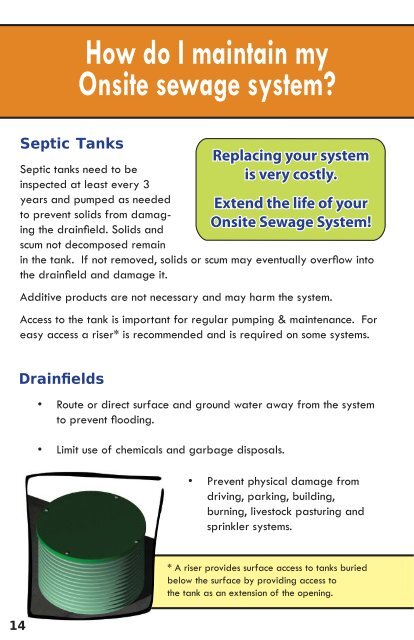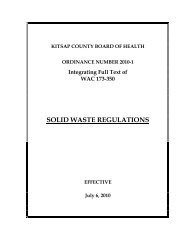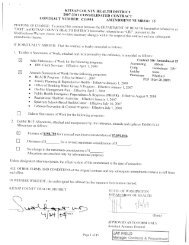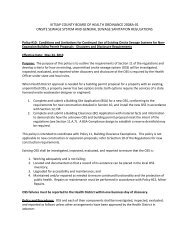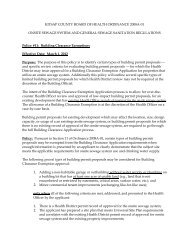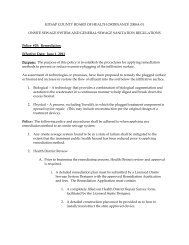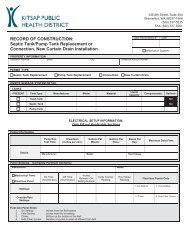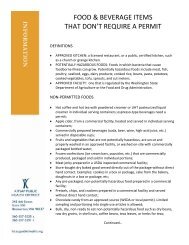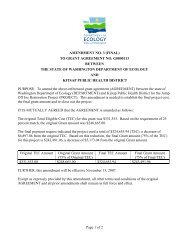Homeowner's Guide to Septic Systems - Kitsap Public Health District
Homeowner's Guide to Septic Systems - Kitsap Public Health District
Homeowner's Guide to Septic Systems - Kitsap Public Health District
You also want an ePaper? Increase the reach of your titles
YUMPU automatically turns print PDFs into web optimized ePapers that Google loves.
How do I maintain my<br />
Onsite sewage system?<br />
<strong>Septic</strong> Tanks<br />
Replacing your system<br />
<strong>Septic</strong> tanks need <strong>to</strong> be<br />
is very costly.<br />
inspected at least every 3<br />
years and pumped as needed<br />
Extend the life of your<br />
<strong>to</strong> prevent solids from damaging<br />
the drainfi eld. Solids and<br />
Onsite Sewage System!<br />
scum not decomposed remain<br />
in the tank. If not removed, solids or scum may eventually overfl ow in<strong>to</strong><br />
the drainfi eld and damage it.<br />
Additive products are not necessary and may harm the system.<br />
Access <strong>to</strong> the tank is important for regular pumping & maintenance. For<br />
easy access a riser* is recommended and is required on some systems.<br />
Drainfields<br />
• Route or direct surface and ground water away from the system<br />
<strong>to</strong> prevent fl ooding.<br />
• Limit use of chemicals and garbage disposals.<br />
• Prevent physical damage from<br />
driving, parking, building,<br />
burning, lives<strong>to</strong>ck pasturing and<br />
sprinkler systems.<br />
* A riser provides surface access <strong>to</strong> tanks buried<br />
below the surface by providing access <strong>to</strong><br />
the tank as an extension of the opening.<br />
14


